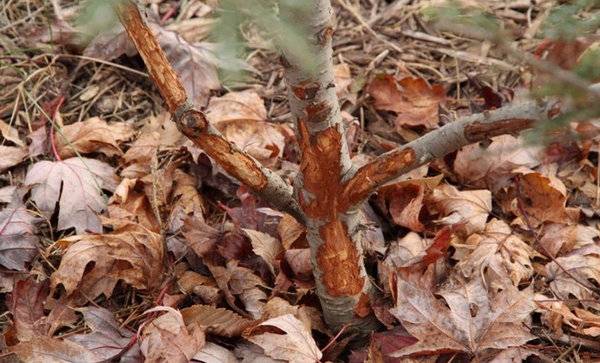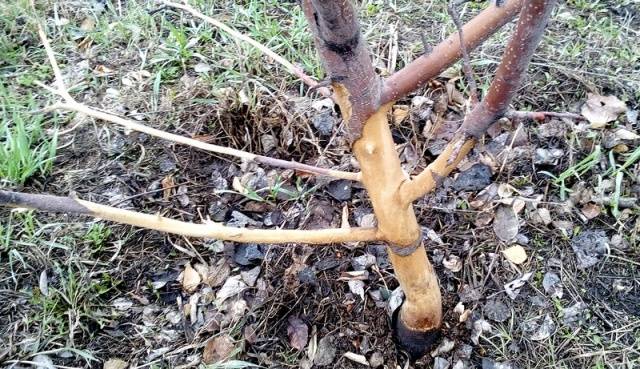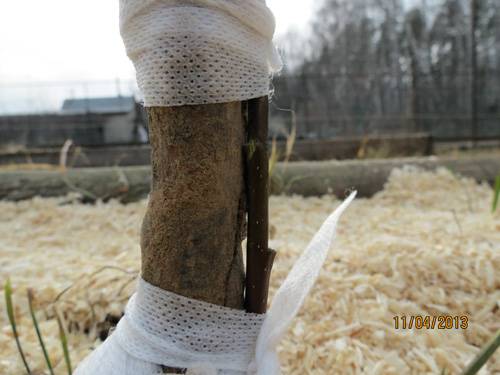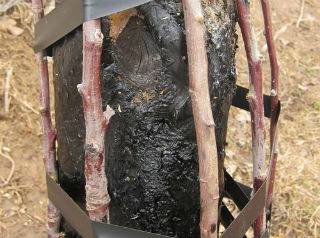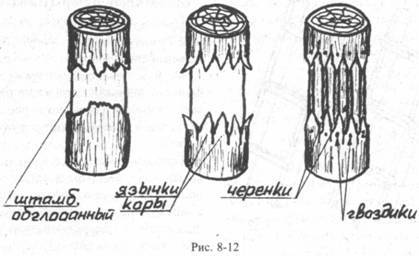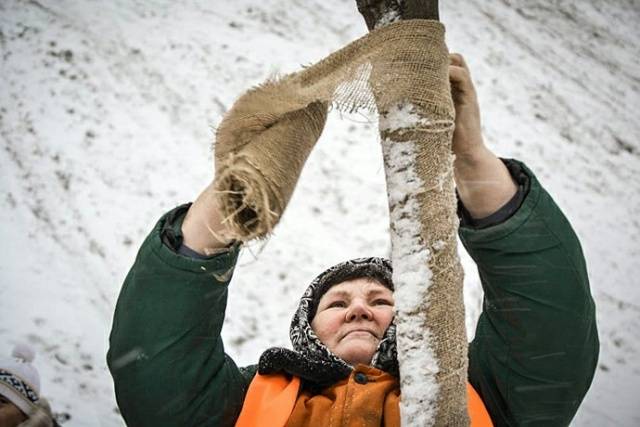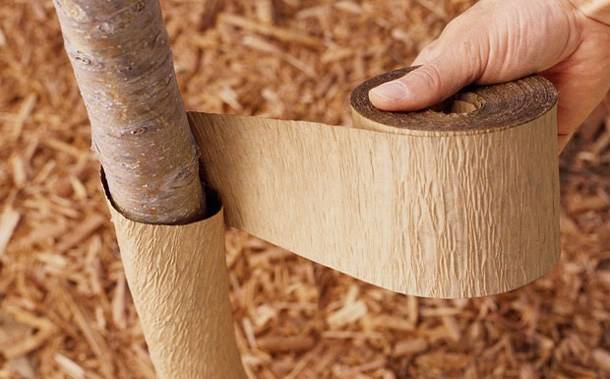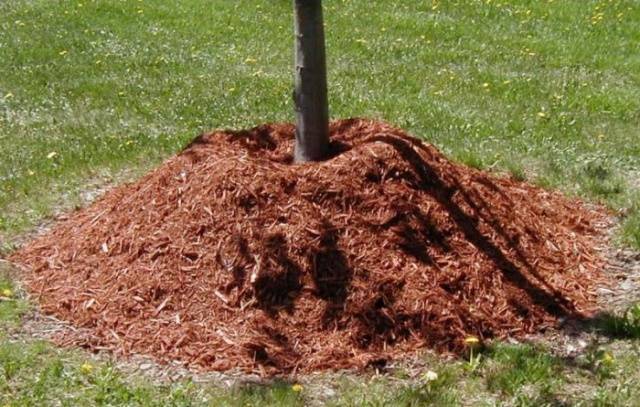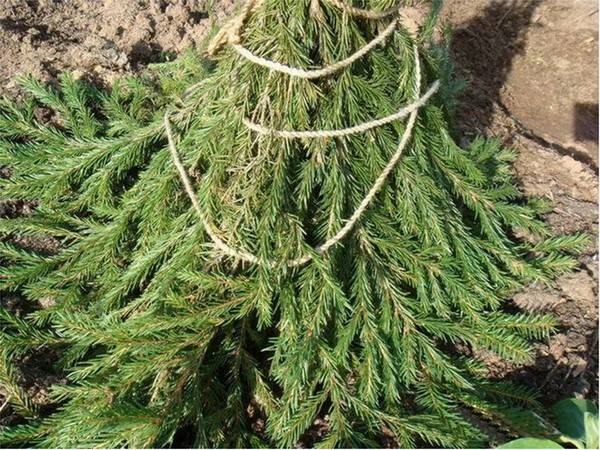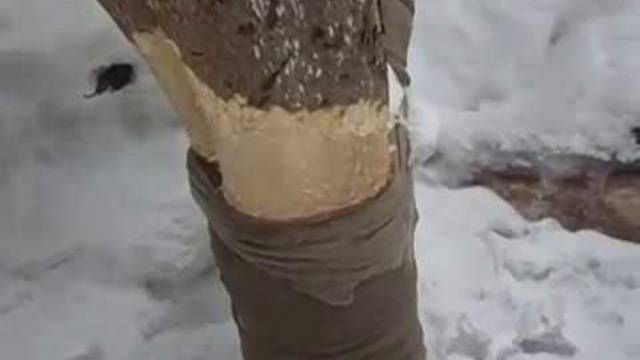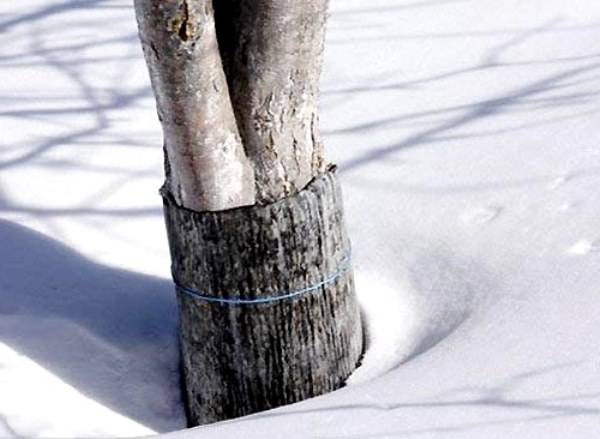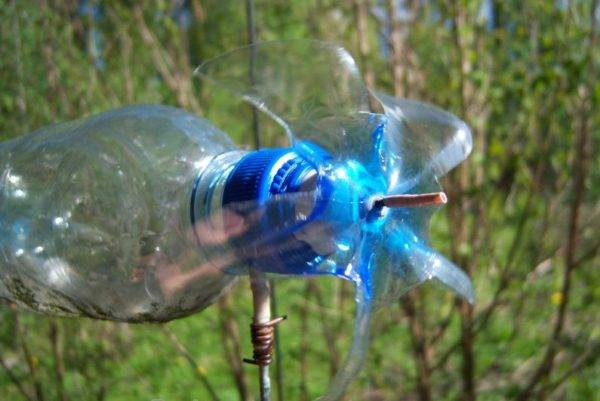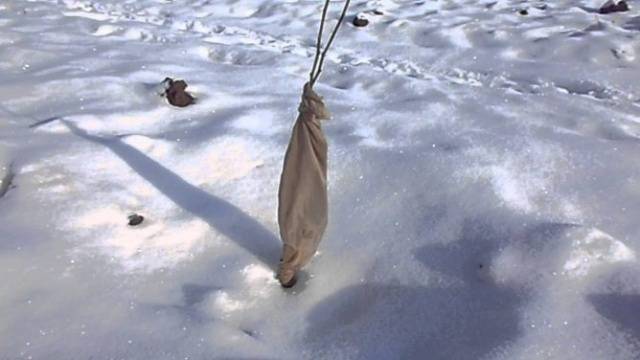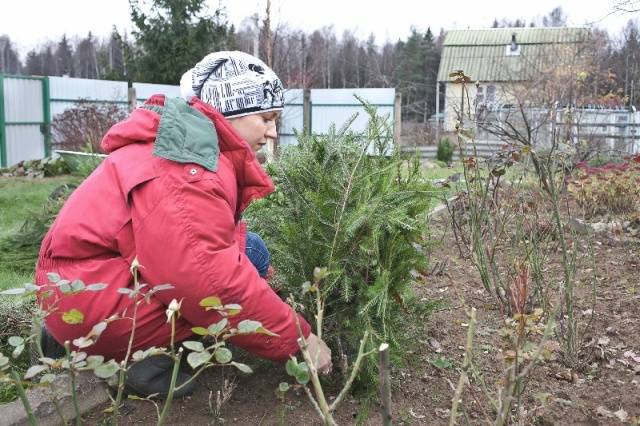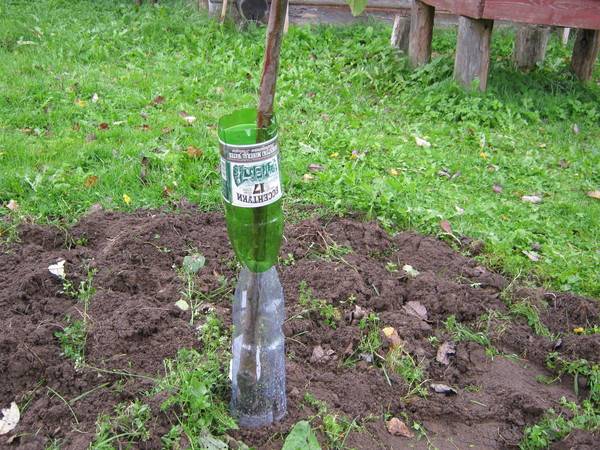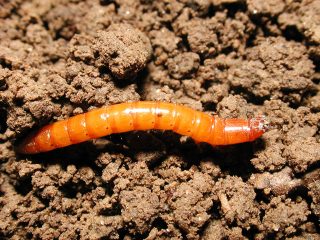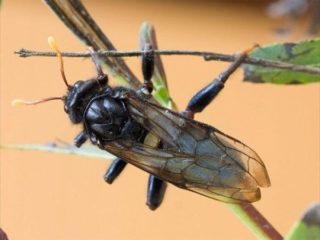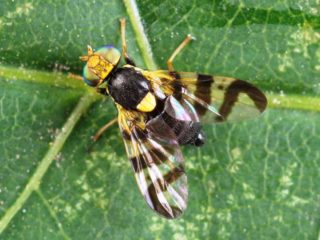Content
Protecting apple trees in winter is necessary not only from frost, but also from rodents. The bark of apple and pear trees is to the taste not only of common voles, but also forest mice and hares. There are especially many mice in warm years. In order to protect your garden from pests, you need to know how to protect apple trees from mice in winter.
Mice begin to raid gardens after the cold weather, when it becomes increasingly difficult to find food in the surrounding fields.
Rodent damage
Rodents, despite their size, can cause tremendous damage to trees. Most of all, they prefer the bark of apple or pear trees, but if they cannot get close to them, they choose cherries or plums. Due to the presence of a slight bitterness, rodents do not like the taste of stone fruit bark. The invasion of mice and hares is especially dangerous for young apple trees and seedlings. Feeding on bark and buds, they expose the bole and disrupt the natural growth processes of the tree. After all, the bark performs the most important functions:
- it protects the apple tree from various diseases and numerous pests;
- the bark helps ensure the continuous movement of nutrients and water.
Most often, mice gnaw the bark with a vertical strip on one side of the tree trunk. But it happens that they gnaw the bark of the seedling from all sides, which is fraught with its death - the connection of the root system with the crown of the tree is terminated.
Bridge grafting
This type of grafting is used when the tree has received too much damage. It often happens that in cold winters, mice gnaw the bark of apple trees from all sides. As a result, the movement of nutrients is disrupted, and the tree may die. Bridge grafting helps to save these trees. If the stem is only partially bare, you can simply treat this area with Bordeaux liquid and grease it with garden var.
Any trees can be grafted with a bridge if their trunk diameter reaches 3 cm.
Preparing cuttings
- They can be harvested in late autumn after tree pruning or in early spring. But you cannot immediately graft a cut stalk into a tree - it simply will not take root. The material for grafting is stored in a dark room, the cuttings are immersed in wet sand or sawdust. You can store the cuttings in the basement. If there is no basement, you need to wrap them in a damp cloth and put them in the refrigerator. During storage, care must be taken to ensure that the fabric does not dry out and that the cuttings do not germinate.
- The thickness of the scion depends on the area of damage. If the height of the damaged area is not more than 5 cm, branches up to 4 mm in diameter are taken. If you have to take cuttings of a larger diameter, you need to make sure that they are flexible and bend easily.
- The number of scions depends on the diameter of the stem. For seedlings with a diameter of 3 cm, two grafts are sufficient, but an adult tree will need at least 8. The number of buds on the cuttings does not matter, since they are removed before the procedure. If the buds are left on the scions, they will begin to grow and disrupt the conductive capacity of the scion.
- The varieties of apple trees from which the grafts are taken can be completely different. You can even take wild cuttings.
- When calculating the length of the cutting, you need to take into account the width of the damaged area, the length of the cuts at the ends of the cutting and a tolerance of about 10 cm.
- The number of grafts intended for one tree must be even. The distance between them should not exceed one or, in extreme cases, two diameters of the cutting.
Vaccination procedure
Bridging grafting is carried out during the period when sap flows and the bark lags behind the trunk more easily - in middle latitudes this time usually falls on May. Sections of trunks with ring damage must be protected from drying out until this moment, for which it is enough to cover them with natural linseed oil or garden putty.
Particular attention should be paid to the processing of the scions. Tools must be well sharpened and decontaminated. At the ends of the cuttings, cuts must be made with a very sharp angle. The cut should be smooth, without roughness. Its length should be 4-5 times the diameter of the scion.
The procedure requires accuracy and precision:
- the bare part of the trunk is cleaned to a shine with a sharp garden knife;
- part of the bark is removed above and below the site of damage - to a healthy area;
- stepping back 1-2 cm from the edge of the bark, you need to make an incision in the form of a letter T - it should be symmetrical, top and bottom, and shallow;
- under the edges carefully bent with a knife, a cut of the prepared cutting is started, the edges of the bark are closed, covered with garden varnish and fixed with a plaster - the cut should fit snugly to the trunk;
- in the same way, the cut of the second end of the scion is set and fixed - the cutting should bend in a small arc.
After all the cuttings are grafted along the circumference of the stem, it is recommended to tie the grafting with a washcloth, then wrap it in tar paper and sprinkle it with sawdust. The bast will gradually grind, so the bandage may not be removed. Do not apply too tight a bandage - it will interfere with the growth of the tree. Some gardeners perform strapping with plastic tape - then, around the middle of summer, the bandage must be removed and the apple tree must be allowed to harden for winter.
If shoots grow from the buds on the cuttings, they must be cut off. All flowers are also removed from the apple tree in order to reduce the load. If wounds are inflicted in the lower part of the trunk, bridges should be placed from the root system to the trunk.
Preventive actions
Before taking measures to protect apple trees from rodents in winter, you must first take several preventive measures.
Before the onset of cold weather, the garden should be cleared of fallen leaves, small twigs, tree scraps, since it is under them that mice are hiding.
While the soil is not frozen yet, you need to dig tree-trunk circles around the trees. But don't dig too deep to avoid damaging their root system.
After digging, you can immediately wrap tree trunks with sacking or other covering material.
Requirements for covering material
Shelter of apple tree boles in winter should provide not only protection from frost, but also from rodents, therefore, the covering material must meet the following characteristics:
- it must have sufficient density;
- it is recommended to select fiber of light colors so that it reflects direct sunlight and protects the tree trunk from burns.
Do not use dark colored fiber as a covering material - it can cause overheating and damage to the wood. You cannot insulate the trunk with organic material, for example, straw - on the contrary, it will attract mice.
In recent years, agrofibre has become widespread as a covering material. Old materials at hand, such as nylon stockings and tights, have not lost their relevance either.
It is necessary to wrap the trunk of an apple tree from mice carefully and carefully, making sure that there are no gaps left. The entire bole is covered, from the very roots to the first skeletal branch.First, you need to shake off the soil from the base of the apple tree in order to deepen the covering material, and then add soil.
Ways to protect apple trees from mice
In the arsenal of gardeners there are many ways to protect apple trees from mice.
Odorant protection
Before hiding apple trees from mice, you can coat their trunk with a lime solution with the addition of cryoline or tar - substances with a sharp characteristic odor. But closer to spring, the smell already disappears. To protect the apple tree from mice, placing sawdust soaked in odorous substances around its base will help. Today, the chemical industry can offer more smelly compounds with a persistent odor. Do not use oils, kerosene or grease - they can leave burns on the apple tree trunk.
Mice also cannot stand the smell of burnt wool. During the winter, you can periodically hang pieces of singed wool on the branches of the seedlings.
Bunches of coriander laid out under the seedlings effectively protect apple trees from mice. You can simply plant this fragrant seasoning under the trees in the spring.
Barrel wrapping
A cheap way that gardeners widely use is to tie an apple tree from rodents with the help of spruce branches. Spruce or juniper branches must be tied to the trunk with the needles down. On top of the spruce branches you can cover the apple tree from mice with a film or mesh. Breathing will be provided for the tree, and access to rodents will be closed.
Many gardeners are advised to wrap the apple tree trunk from mice with an iron net. The covering procedure should be carried out carefully so as not to injure the bark of the tree.
Having wrapped the apple tree stem from mice with nylon tights, you can moisten them with a very odorous substance. Rodents cannot cope with such protection.
Using roofing material
Sometimes, in order to protect the apple tree stem from mice, it is tied with roofing material. However, one should not forget that:
- the dark color of roofing material will lead to overheating and burns on the bark of the tree;
- it is necessary to prevent the contact of roofing material with the surface of the tree due to its impregnation with resin.
If you had to use roofing material as a covering material, you must take precautions - first wrap the bole with paper or burlap. The gap formed between them must be closed so that water does not flow there. Otherwise, when frozen, it will shrink the tree. In the spring, as soon as the frosts go away, it is necessary to quickly remove the roofing material, since it does not allow air to pass through.
other methods
Mice usually hide in the trunk circle. After the snow falls, it is necessary to compact it well in a diameter of 2 meters around the apple tree. It will be more difficult for mice to wade through a dense layer of snow.
Spraying trees with a solution of copper sulfate or Bordeaux liquid will scare away mice. For processing, you must choose dry and sunny weather.
All rodents are shy and afraid of loud sounds. Empty plastic bottles are hung on the branches of apple trees from mice, which create a background noise even with small air movement. You can also cut the bottles into strips and hang them in the form of ribbons. However, at the end of winter, when it is especially difficult to feed, rodents may not be stopped by the clatter of plastic bottles.
There are also anti-mouse electronic devices, the effectiveness of which depends on the area of the site.
An interesting method is also proposed, such as storing in a certain place a section of foliage, cut branches, and other plant residues. The food waste pit will distract the mice from the trees.
The video shows different ways to protect the garden:
Protecting apple trees from hares
Those who like to eat the bark of apple trees also include larger rodents - hares. They often gnaw on the bark to their height. But there are effective ways to protect the apple tree from hares in winter.
A metal mesh fence is built around the apple tree from rodents. It needs to be slightly deepened into the ground.Hares will not be able to gnaw through such a fence. At the same time, the mesh will not restrict the access of light and air, which will protect the apple tree from fungal diseases.
To save apple trees from rodents, some garden owners resort to various tricks - they tie the trunk with spruce branches, and dog hair is tied to coniferous branches. Hares don't even come close to such trees.
You can hide the lower part of the apple tree from mice, and tie ribbons smeared with tar to the upper branches. Its pungent smell will scare away rodents.
Young seedlings can be protected from rodents with plastic bottles. Having cut off their ends, it is necessary to put on the trunk and twigs, sprinkle with snow from below so that the mice cannot slip through.
A high and strong fence without gaps and tightly adjacent to the surface of the earth will prevent hares from getting into the site.
Pets - cats and dogs - will be excellent guards for the garden. The smell of cats will scare away mice, and hares will not dare approach the house where dogs live.
Many, instead of an iron mesh, take artificial, fine-mesh, in which vegetables are stored. A net is wrapped around the trunk, and on top of it is wrapped with insulating material.
If there is a pond next to the apple trees, water rats can come from there.
To save the garden from this danger, it is necessary to dig ditches around the trees with a shovel's bayonet depth video:
To protect apple trees from rodents in winter, it is best to use several methods at the same time. Then the protection will be more effective, and the apple trees will overwinter safe and sound.

